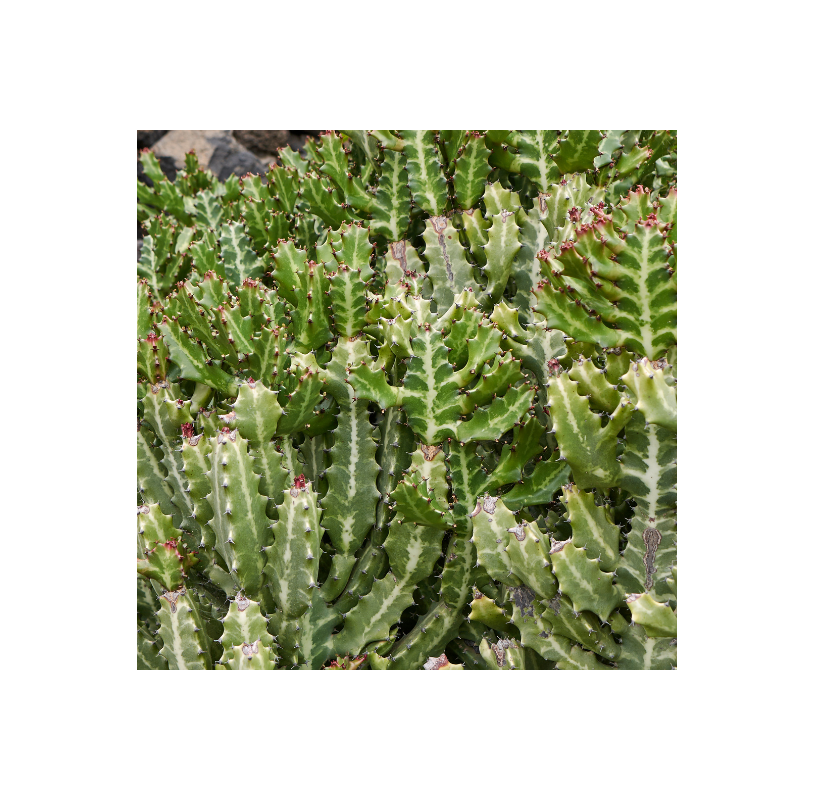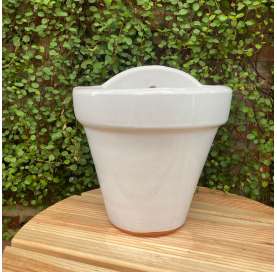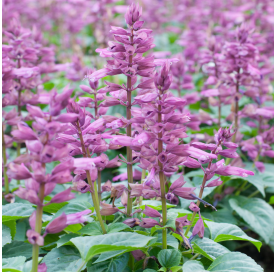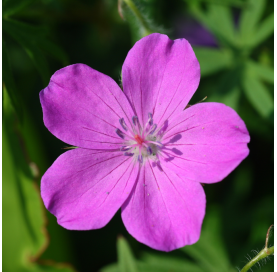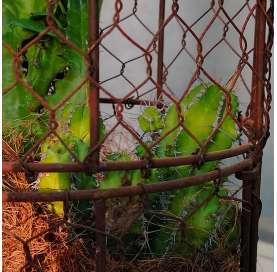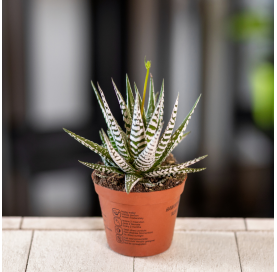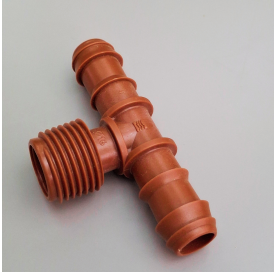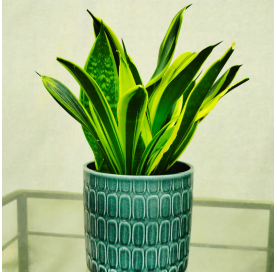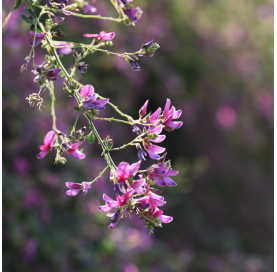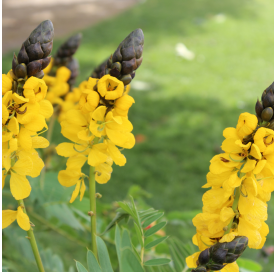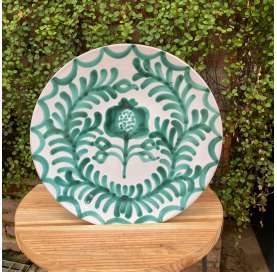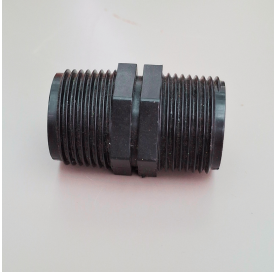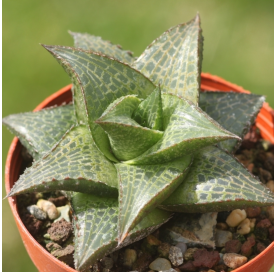Euphorbia lactea
Euphorbia lactea is an easy-care ornamental succulent from tropical Asia. With its marbled appearance and candelabra-like structure, it is popular in gardens and as a houseplant. Its toxic sap requires careful handling.
 Encrypted payments for greater security
Encrypted payments for greater security
To reduce the plant's time in transit, shipments are made from Monday to Wednesday.


Shipping only to mainland Spain and mainland Portugal
The Euphorbia lactea, commonly known as "Candelabra Plant" or "Dragon Bones," is a succulent plant from the Euphorbiaceae family. Its structure and unique appearance make it popular in gardening, especially for its upright, branched form that resembles a candelabra. This plant is native to tropical regions of Asia, mainly India and Sri Lanka.
Description
Euphorbia lactea has upright, triangular, or multi-ribbed stems with a green color and white veining that gives it a marbled appearance. The edges of its ribs can develop small spines. There are also prized varieties like **Euphorbia lactea 'Cristata'** (the crested form), which has a wavy, coral-like appearance and is widely used as an indoor plant.
Origin and History
Native to tropical Asia, Euphorbia lactea has spread worldwide as an ornamental plant, especially in warm, dry regions. In India and Sri Lanka, it thrives in its natural habitat under warm temperatures and high humidity. It has become popular in gardens and as an indoor plant for its beauty and drought tolerance.
Care
It’s a relatively easy-care plant and suitable for beginners, as it doesn’t require much water or constant attention.
- Location: Prefers bright, indirect or filtered light. Indoors, place it near a bright window. Outdoors, it tolerates direct sunlight, though in very hot climates, partial shade is better to prevent sunburn.
- Soil: Needs a well-draining soil, like a cactus or succulent mix. Good drainage is essential, as it’s prone to root rot if overwatered.
- Temperature: Tolerates warm temperatures and can handle up to 30-35 °C (86-95 °F). In winter, it’s essential to keep it in an environment above 10 °C (50 °F), as it’s sensitive to frost and may suffer damage at low temperatures.
Watering
Euphorbia lactea is highly drought-tolerant and should be watered sparingly. During spring and summer, water only when the soil is completely dry. In fall and winter, watering should be minimal, as the plant enters a dormant state and needs less water.
Pruning
It doesn’t require regular pruning, but if a branch is damaged, it can be carefully removed with disinfected tools. The plant may release a milky sap, which is toxic and can irritate the skin and eyes, so it’s advisable to handle it with gloves.
Fun Facts
- Toxic Sap: Like other Euphorbias, Euphorbia lactea produces a milky sap that is toxic and can irritate the skin and eyes. It’s recommended to wear gloves when handling it and keep it out of reach of children and pets.
- Popular Mutations: The "Crested" variety of Euphorbia lactea, with its wavy or crest-like shape, is highly popular as an ornamental plant and is often grafted onto other Euphorbia species to create a more distinctive appearance.
- Resilience and Low Maintenance: This plant is an excellent choice for those looking for a low-maintenance succulent with an exotic appearance, ideal for both indoor and outdoor settings in warm climates.
Euphorbia lactea is a unique and striking ornamental plant that’s easy to care for and adds an exotic touch to any succulent collection.
Data sheet
- Name
- Euphorbia lactea
- Origen
- tropical Asia
- Height
- Can reach up to 1.5 meters (5 feet) indoors and over 2 meters (6.5 feet) outdoors under ideal conditions.
- Colour
- Light green
- Flowering
- Rarely blooms indoors
- Location
- Prefers bright, indirect light.
- Irrigation
- Moderate. During the growing season (spring and summer), water only when the soil is completely dry.
- Applications
- his plant is a popular ornamental choice for dry gardens
- Note
- Euphorbia lactea produces a milky sap that is toxic and irritating to the skin and eyes, so handling it with gloves is recommended.
12 other products in the same category:
-
White glazed hanging...€11.00
-
Salvia amistad€3.80
-
Geranium sanguineum€8.20
-
Jaula vieja con cactus€22.00
-
Aloe trigre€6.00
-
Té de 16mm 1/2€0.60
-
Sansevieria 'Laurentii' -...€29.00
-
-
Cassia didymobotrya "alata"€15.00
-
Plato colgar granadino 35cm€21.00
-
Threaded tap 1/2€0.70
-
Haworthia venosa€6.00
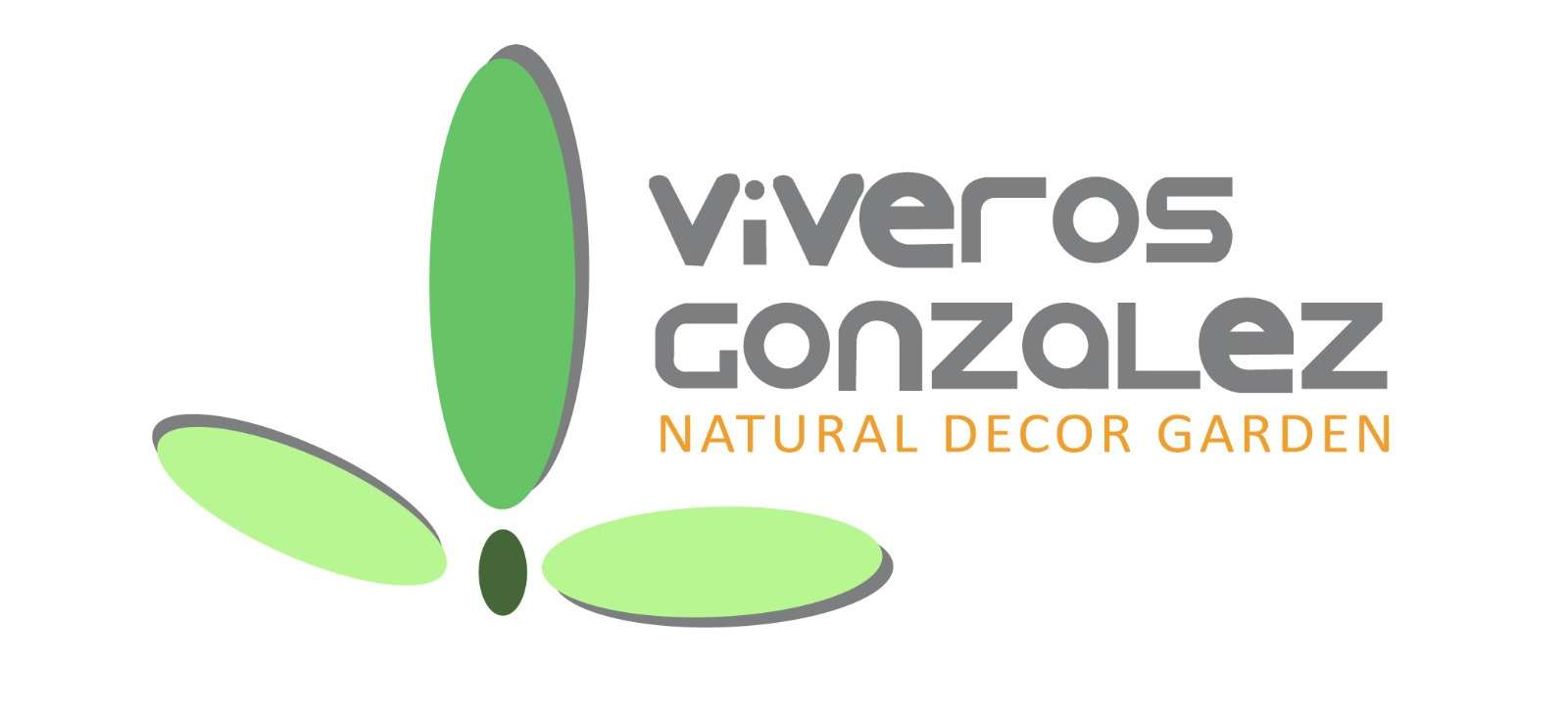
 English
English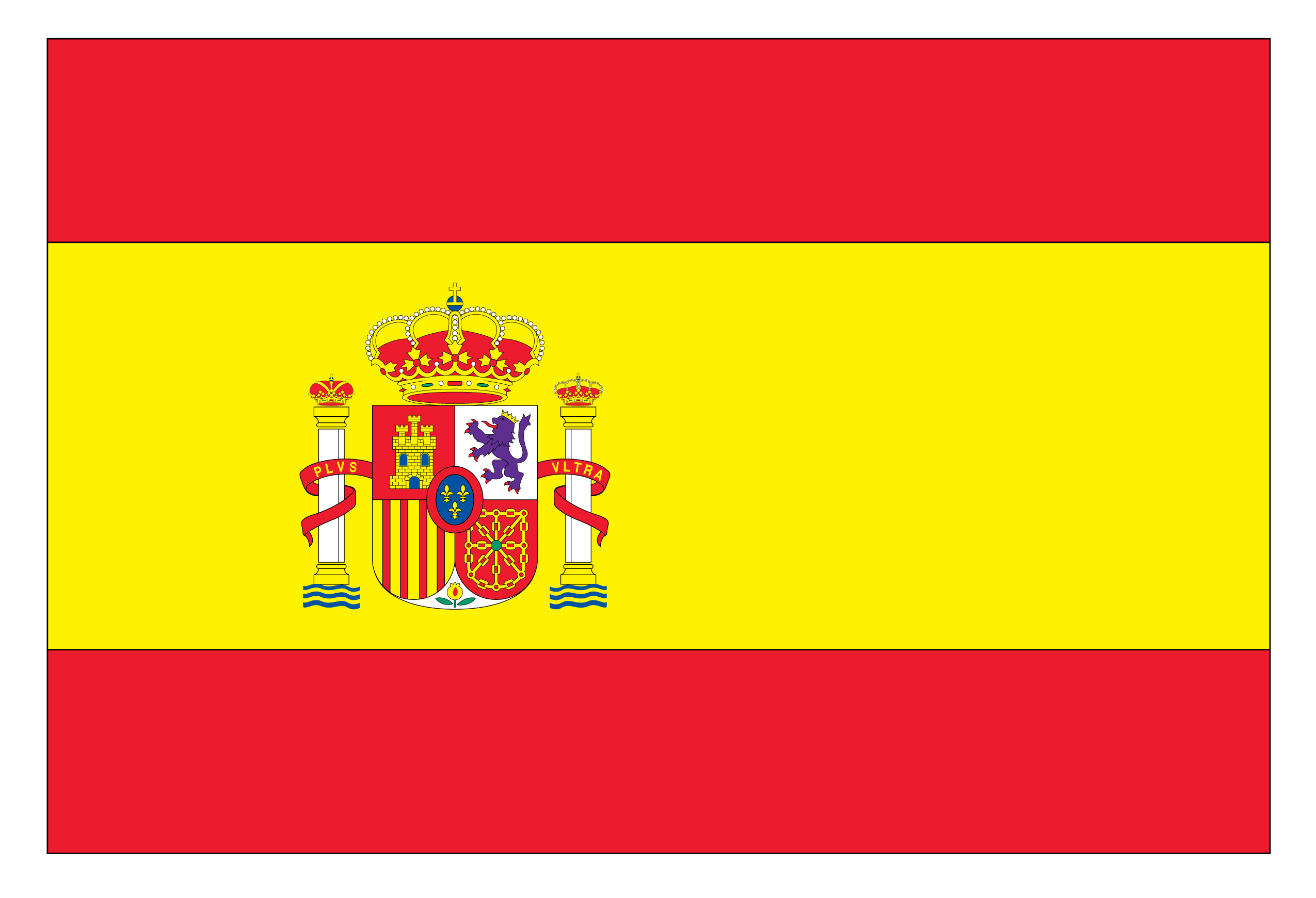 Spanish
Spanish